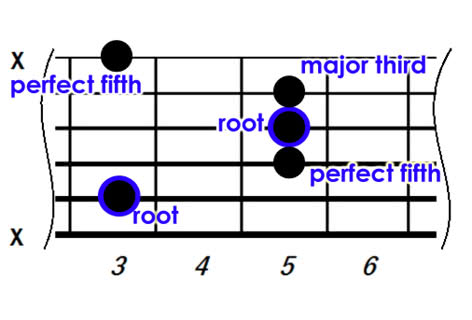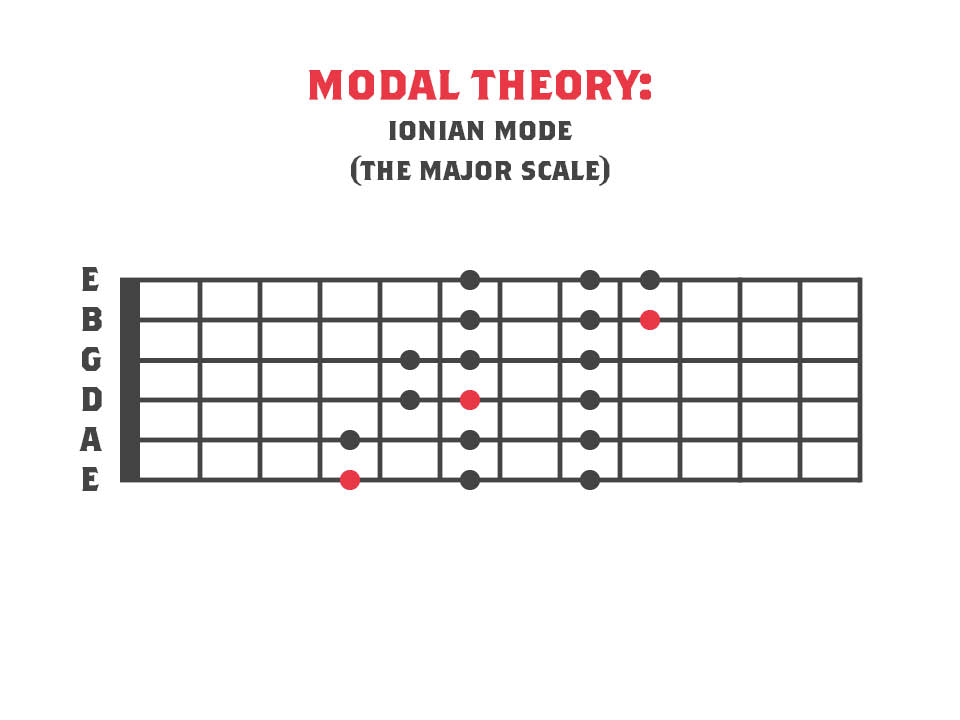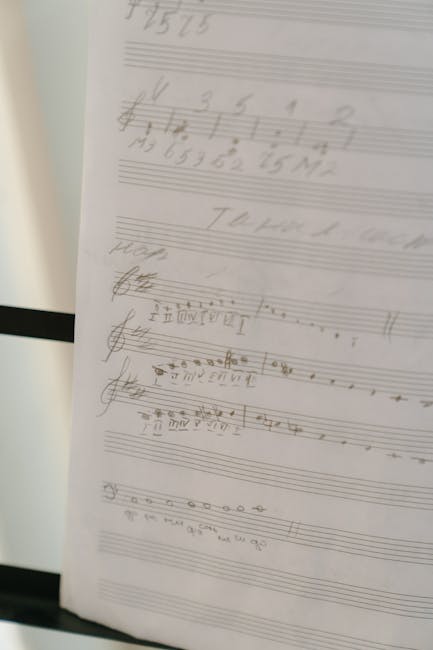Congratulations! You’ve picked up the guitar, strummed a few chords, and maybe even attempted a shaky rendition of “Wonderwall” at your friend’s last barbecue. But now, you’re ready to take your musical journey to the next level. And that’s where music theory comes in. Don’t worry, we promise not to make you memorize the entire encyclopedia of music knowledge. But a little bit of know-how can go a long way in helping you unlock the secrets of the fretboard and become the guitar hero you’ve always dreamed of. So grab your guitar (and maybe a cold beverage) and let’s dive into some essential music theory for guitarists. It’s gonna be a wild ride!
Contents
- 1 Understanding Scales and Their Significance on the Guitar
- 2 The Role of Chords in Guitar Music Theory
- 3 Mastering Guitar Chord Progressions for Songwriting
- 4 Exploring Modes for Guitarists
- 5 Incorporating Time Signatures into Your Playing
- 6 The Importance of Key Signatures for Guitar Music
- 7 How to Apply Music Theory to Improvisation on the Guitar
- 8 FAQs
- 9 Rock On!
Understanding Scales and Their Significance on the Guitar
So you’ve picked up the guitar and you’re ready to rock out, but wait! Do you really understand scales and their significance on the guitar? Let’s break it down in a way that even air guitarists can understand.
First off, think of a scale as a musical alphabet. Just like how you need letters to form words, you need scales to form melodies and solos. Without scales, your guitar playing would be like a song without lyrics – meaningless and confusing.
Now, when it comes to the significance of scales on the guitar, imagine them as the secret ingredients in a recipe. You can’t just throw random spices into a dish and expect it to turn out delicious. Similarly, you can’t just play random notes on the guitar and expect it to sound harmonious. Scales provide structure and guidance, helping you create memorable and tasty licks.
So next time you pick up your guitar, remember that scales are your best friends. They’re the keys that unlock the magical world of music and elevate your guitar playing from amateur to rockstar status. Embrace the scales, master them, and watch as your guitar skills soar to new heights!

The Role of Chords in Guitar Music Theory
Chords, oh sweet chords. They are the bread and butter of guitar music theory. Without them, we’d all just be strumming single notes and hoping for the best. But with chords, we can create harmonious masterpieces that soothe the soul and make our fingers ache in the process.
So, what exactly is ? Well, let me break it down for you in simple terms (because let’s face it, music theory can be a bit mind-boggling). Chords provide the foundation for a song. They give it structure and form, like the frame of a house. Without chords, a song would be like a house of cards, just waiting to collapse.
But don’t think that chords are just boring old triads. Oh no, there are endless possibilities when it comes to chord shapes and voicings. From the sultry jazz chords that make you feel like you’re sipping a martini in a smoky bar, to the crunchy power chords that make you want to headbang until your neck hurts, chords have the power to evoke all kinds of emotions.
So, next time you pick up your guitar, remember the humble chord. Pay homage to its place in the grand scheme of guitar music theory. And most importantly, have fun exploring the vast world of chords that awaits you. Rock on, my friends!
Mastering Guitar Chord Progressions for Songwriting
So you’ve picked up the guitar and decided you want to be the next musical genius, huh? Well, you’re in luck because is easier than learning how to tie your shoes. (Seriously, who even knows how to tie their shoes these days?)
First things first, let’s talk about the backbone of any good song – the chord progressions. With just a few simple chords, you can create a masterpiece that will have people swooning in no time. And if you’re feeling a little lost, don’t worry! There are plenty of resources out there to help guide you along the way. YouTube tutorials and online lessons are your new best friends.
Experimenting with different chord progressions is key to finding your unique sound. Mix it up, throw in a random minor chord here and there, and see what happens. Who knows, you might just stumble upon the next big hit without even trying. Don’t be afraid to get weird with it!
Remember, practice makes perfect. So grab that guitar, strum a few chords, and get those creative juices flowing. Before you know it, you’ll be writing songs that will make Taylor Swift jealous. And who knows, maybe one day you’ll be the one teaching others how to master guitar chord progressions for songwriting. The possibilities are endless!

Exploring Modes for Guitarists
So, you fancy yourself a guitarist, eh? Well, buckle up because we’re about to take you on a wild ride through the world of modes. Sounds fancy, doesn’t it? But fear not, we’ll break it down for you in the most entertaining way possible. Grab your guitar and let’s dive in!
First up, we have the Ionian mode, also known as the good ol’ major scale. This mode is like the vanilla ice cream of the musical world – it’s classic, it’s versatile, and it’s a staple in almost every song. So, if you want to play something that sounds bright and cheery, the Ionian mode is your jam.
Next, we have the Dorian mode, which is like the edgy cousin of the Ionian mode. It has a bit of a mysterious vibe to it, kind of like that friend who always knows the best underground bands. If you want to add a touch of coolness to your playing, give the Dorian mode a try.
And let’s not forget about the Mixolydian mode, aka the party mode. This mode has a laid-back, groovy feel to it that just makes you want to kick back, relax, and have a good time. Throw on some sunglasses, grab a margarita, and let the Mixolydian mode take you on a musical vacation.

Incorporating Time Signatures into Your Playing
So you want to spice up your playing by incorporating different time signatures? Well, look no further because I’ve got some tips for you that will have you sounding like a rhythm master in no time!
First things first, **understand the basics**. Time signatures can be a little confusing at first, but once you get the hang of them, you’ll wonder how you ever played without them. Remember that the top number tells you how many beats are in each measure, while the bottom number indicates which note value gets the beat (e.g. 4/4 means there are 4 beats per measure and the quarter note gets the beat).
Next, **practice, practice, practice**. The best way to get comfortable with different time signatures is to play them over and over until they become second nature. Try switching between different time signatures while playing scales or simple chords to get a feel for how they work.
Don’t be afraid to **experiment**. Try out some odd time signatures like 5/4 or 7/8 to really challenge yourself and add some interest to your playing. Remember, there are no rules when it comes to music, so feel free to get creative and see where it takes you.
The Importance of Key Signatures for Guitar Music
Have you ever tried to impress your friends with a killer guitar solo, only to realize halfway through that you’re playing in the wrong key? Cue the awkward silence and confused looks. That’s where key signatures come in to save the day!
Key signatures are like the secret code that unlocks the true potential of your guitar playing. By understanding and utilizing key signatures, you can effortlessly navigate through different chords and scales, creating harmonious melodies that will make your audience swoon.
Think of key signatures as the cheat codes of the guitar world. With just a glance at the key signature, you can instantly know which chords and scales will sound best together, saving you time and effort in the creative process. Plus, knowing your key signatures will make you look like a true musical genius in front of your bandmates.
So next time you pick up your guitar, take a moment to appreciate the importance of key signatures. They may seem like a small detail, but they hold the key (pun intended) to unlocking endless musical possibilities on your beloved instrument.
How to Apply Music Theory to Improvisation on the Guitar
So you want to take your guitar playing to the next level by incorporating some music theory into your improvisation? Well, buckle up because I’m about to drop some knowledge bombs that will blow your mind (in a good way, of course).
First things first, let’s talk about scales. Scales are like the building blocks of music, and knowing your scales can greatly enhance your improvisation skills. Start by familiarizing yourself with the major and minor scales, and then dive into the world of modes like Mixolydian, Dorian, and Phrygian. Trust me, once you start playing around with these scales, you’ll be amazed at the cool sounds you can create.
Next up, let’s talk about chord progressions. Understanding how chords work together can really take your improvisation to the next level. Experiment with different progressions like the classic I-IV-V or get adventurous with some jazzier chord progressions. The key here is to let your fingers do the walking and see where the music takes you.
And finally, don’t be afraid to experiment and make mistakes. Improvisation is all about taking risks and being creative. So what if you hit a wrong note? Embrace it and see where it takes you. Remember, music theory is just a tool to help guide you, but ultimately, it’s your creativity and passion that will shine through in your improvisation.
FAQs
What are the basic elements of music theory that guitarists should know?
Well, my fretboard-loving friend, first and foremost, you should wrap your head around notes, scales, chords, and intervals. Once you’ve got those down, you’ll be riffing like a rockstar in no time!
How can understanding music theory improve my guitar playing?
Think of music theory as your secret weapon, dear guitarist. It’s like having a map to navigate the musical landscape, helping you understand why certain chords sound good together, and giving you the tools to unleash your creativity on the fretboard.
Do I really need to learn music theory to be a good guitarist?
While you can certainly strum away without knowing your Mixolydian from your Phrygian, understanding music theory can take your playing to the next level. Plus, it makes you sound super smart at parties.
How can I apply music theory to my practice routine?
Ah, the age-old question! Start by incorporating scales and chords into your warm-ups, then try analyzing your favorite songs to see how they use different musical elements. Before you know it, you’ll be a theory-wielding axe master!
What resources are available for guitarists looking to dive into music theory?
From books to online courses to YouTube tutorials, the world is your oyster, my six-stringed companion! Find a resource that speaks to you and dive in. Just remember, practice makes perfect!
Rock On!
Congratulations, you’ve made it through the crash course in music theory for guitarists! Don’t worry, you don’t have to memorize everything perfectly - even the pros have cheat sheets. Keep practicing, keep learning, and keep rocking out with your guitar. Remember, music theory is just a fancy way of saying “knowing your stuff.” So go ahead, shred those guitar solos, impress your friends with your chord progressions, and most importantly, have fun making music! Rock on!



